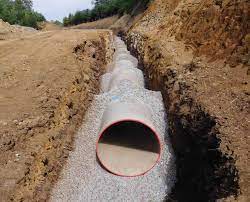A large number of culvert pipes are installed every year in North Carolina. In general, these pipes are mainly selected based on structural requirements with less of an emphasis placed on the subsurface environmental parameters and their impact on the pipe’s material durability. Therefore, an improved selection criteria with a focus on durability and service life are proposed herein. As a part of developing such criteria, relevant environmental subsurface exposure conditions including pH, resistivity, chloride and sulfate are cataloged by using GIS database offered by the United States Department of Agriculture (USDA) and the National Atmospheric Deposition Program (NADP). Exposure conditions compatible with various pipe materials are identified based on material science and corrosion principles in published literatures and utilizing existing specifications by departments of transportation across the US. A software, referred to as Pipe Assessment and Selection Software (PASS), is developed in support of implementing the research findings. PASS is programmed in a form of a spreadsheet with readily accessible interfaces and interactive menu. The development of PASS benefited from several meetings with our NCDOT colleagues during which valuable comments and suggestions were received. PASS provides rapid assessment of pipe options for a given project’s subsurface environmental conditions and therefore facilitates the estimation of the pipe service life. A training video is developed for the use of PASS.

Furthermore, as the service life of galvanized and aluminized steel pipes is directly related to the thickness of their coating, a proposed approach for estimating discount rate as a function of coating thickness is proposed. This aspect addresses the potential of manufacturing processes leading to the coating on the pipes being thinner than specified by standards (e.g., ASTM or AASHTO), and therefore resulting in reduced galvanized and aluminized steel pipes service life. The influence of coating thickness on the service life is quantified using data from a set of corrosion testing. A “discount rate” approach is proposed such that the cost of the pipes can be adjusted based on the estimated reduction in their service life. The discount rate is also programmed in spreadsheet to facilitate its implementation in practice.
